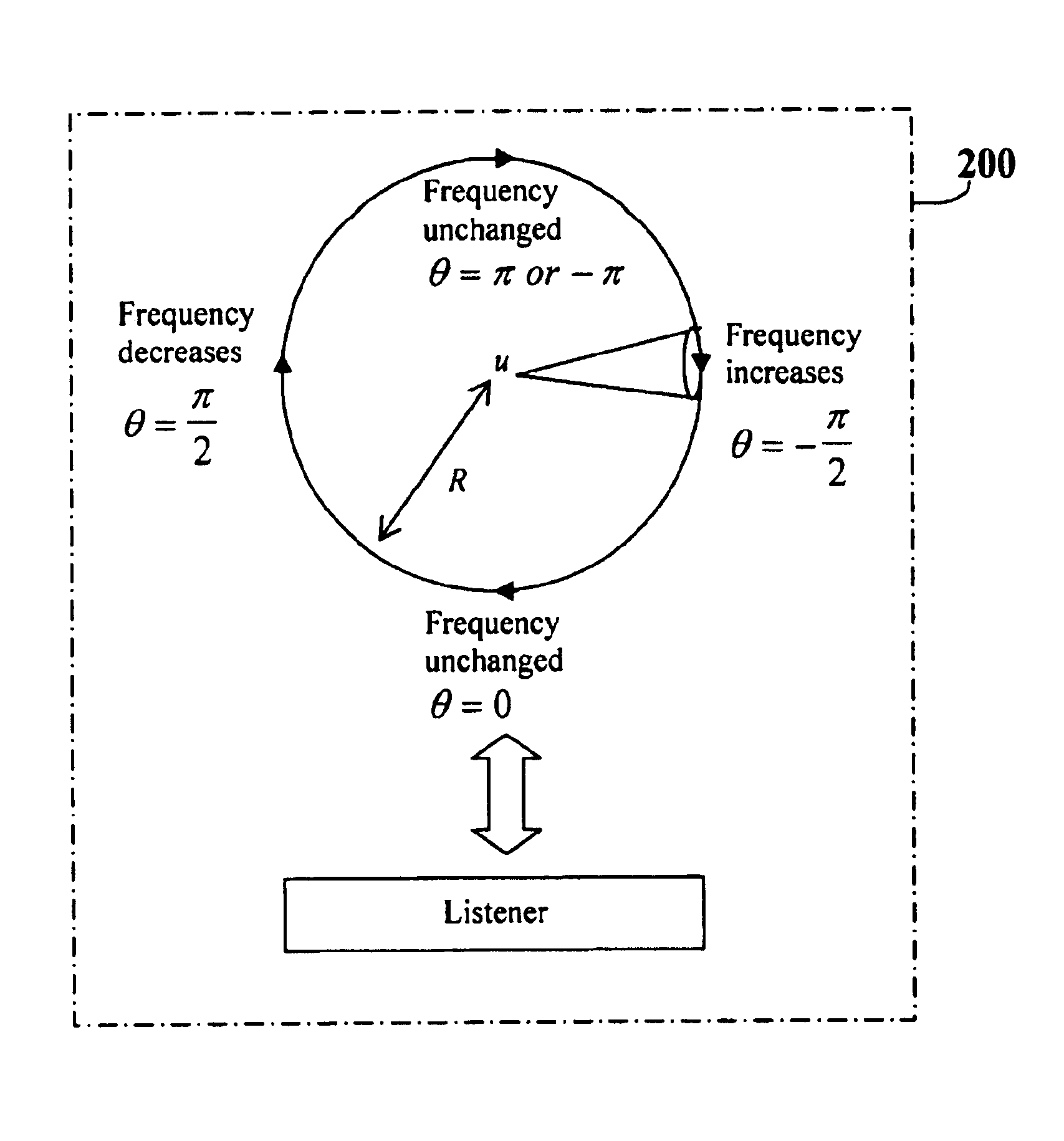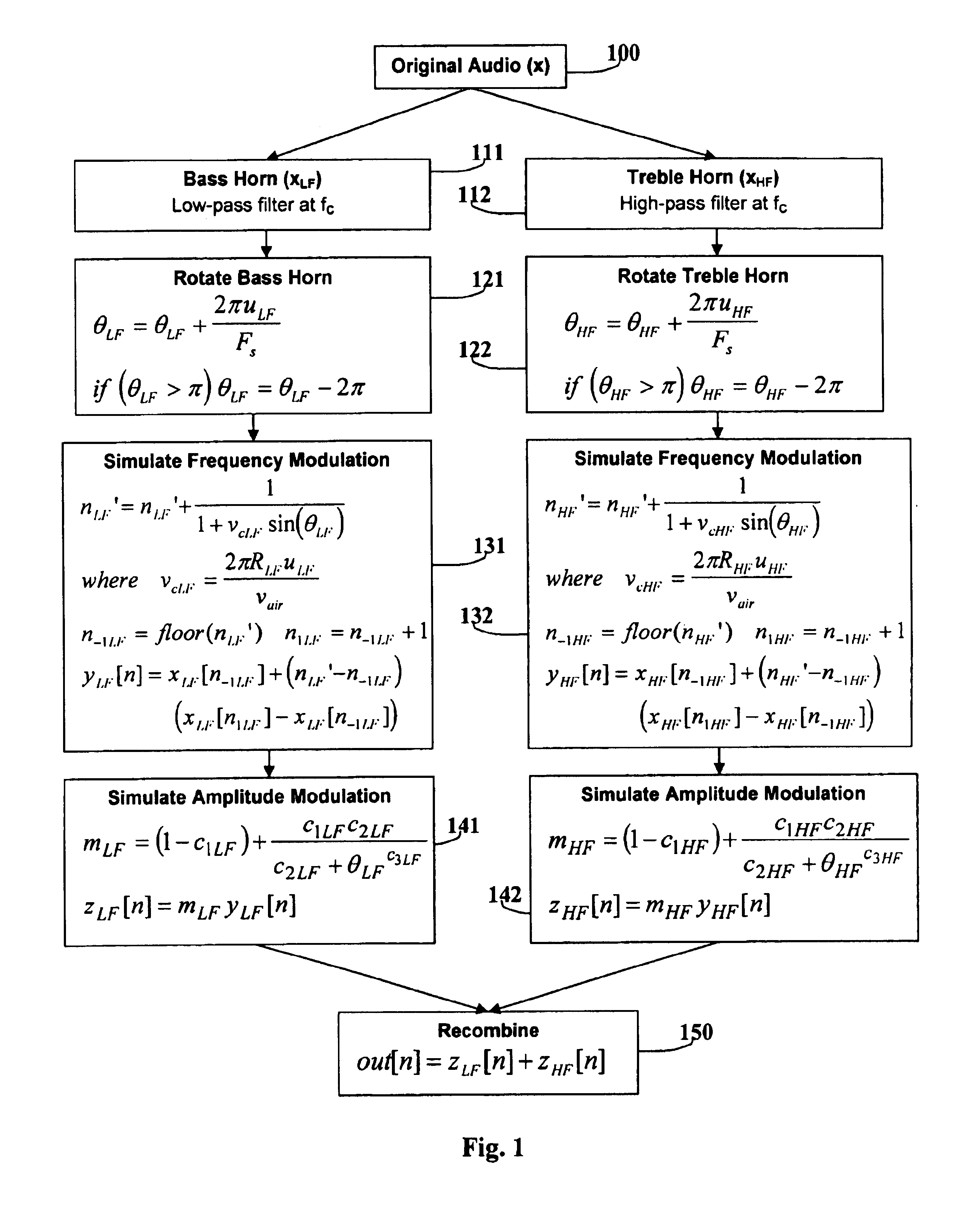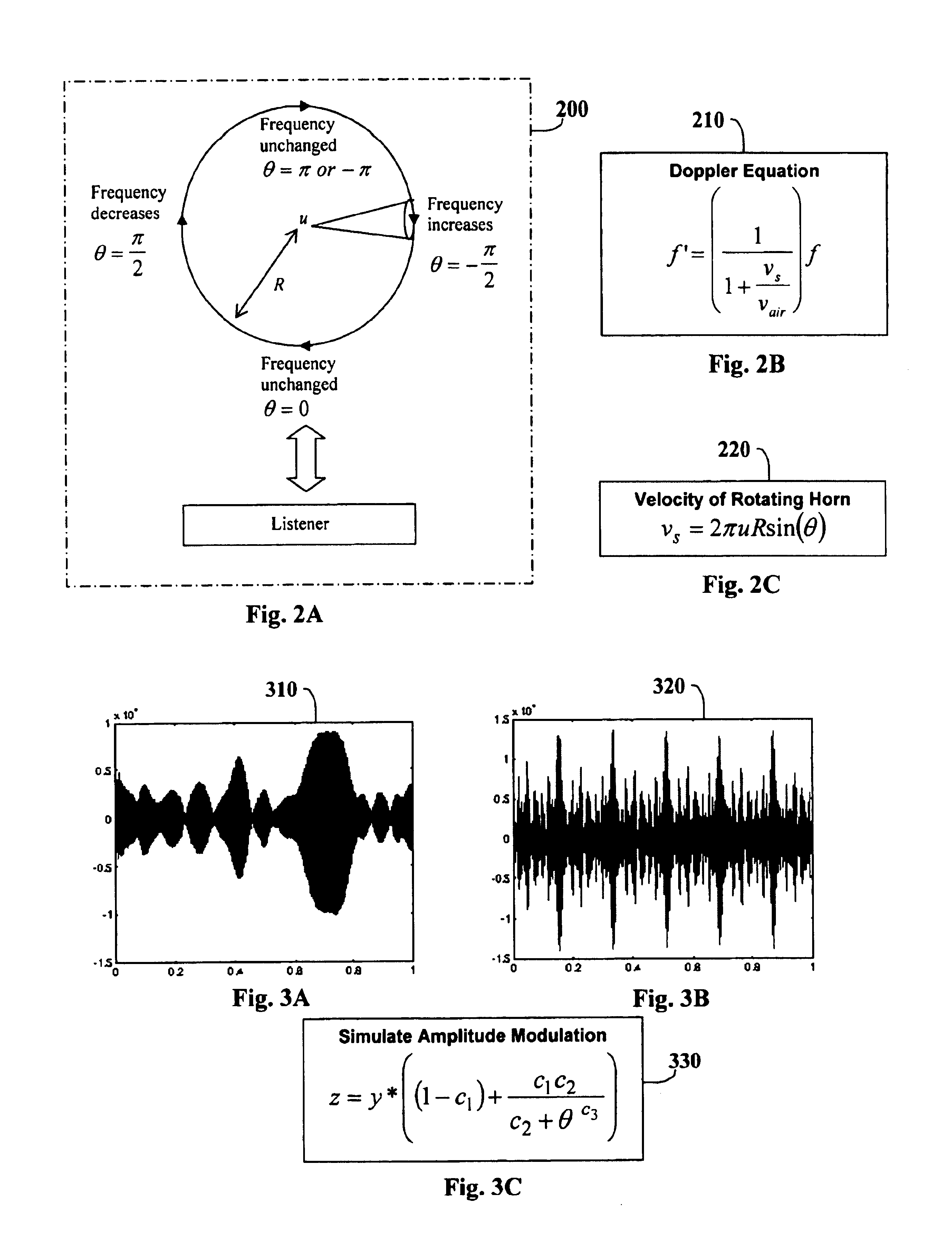Method and apparatus to simulate rotational sound
a technology of rotating speakers and sound waves, applied in the direction of transducer details, instruments, electrical transducers, etc., can solve the problem of less importance of am and achieve the effect of adding noise to the angular position
- Summary
- Abstract
- Description
- Claims
- Application Information
AI Technical Summary
Benefits of technology
Problems solved by technology
Method used
Image
Examples
Embodiment Construction
The process and apparatus for this invention are based upon a theoretical consideration of the frequency modulation and the measurement of the amplitude modulation of a rotating speaker. The process and apparatus are described below for the case with a separate bass and treble speaker or horn. Please note that the terms speaker and horn are used interchangeably throughout. In addition, the rotating speaker could have only one horn, playing either all or part of the frequency spectrum, or three or more horns, containing bass, midrange and treble frequency bands.
When necessary, variables have subscripts for whether they apply to the bass horn section (LF for low frequency) or the treble horn section (HF for high frequency). This subscript protocol emphasizes that the bass and treble horns can have different parameters, such as rotational frequency. However, in some equations or descriptions, the subscripts are left out for simplicity, and it is either stated how to apply the variable ...
PUM
 Login to View More
Login to View More Abstract
Description
Claims
Application Information
 Login to View More
Login to View More - R&D
- Intellectual Property
- Life Sciences
- Materials
- Tech Scout
- Unparalleled Data Quality
- Higher Quality Content
- 60% Fewer Hallucinations
Browse by: Latest US Patents, China's latest patents, Technical Efficacy Thesaurus, Application Domain, Technology Topic, Popular Technical Reports.
© 2025 PatSnap. All rights reserved.Legal|Privacy policy|Modern Slavery Act Transparency Statement|Sitemap|About US| Contact US: help@patsnap.com



